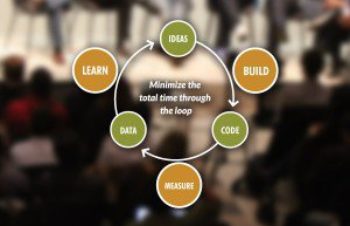Building a Global Two-Sided Marketplace: Johnny Hudson, CEO Remixology

My name’s Johnny Hudson and I’m the co-founder and CEO of Remixology; we’re a platform and two-sided marketplace that connects people looking to commission music remixes with remix artists and producers and provide workflow tools to aid the process end-to-end.
Johnny, you spent a proportion of your career working for Universal Music Group. What particular problem were you experiencing in the music industry which proved the need for a platform like Remixology?
I’ve worked in music a very long time and remixes have always been a factor in all my roles from A&R and asset management to promotions and marketing.
When I started out in music, there was a huge focus on club promotion. You would remix versions of pop and rock tracks into extended versions that DJs would play in nightclubs. That’s evolved now into a really rich environment for artists collaborating together and bringing together fusions of different sounds, styles, scenes and most importantly fanbases.
When you’re putting together an album concept, for example, you may need somebody to do additional production and engineering work on a track to create a new version of it. Or you may want a version that features another artist or performer to help access new audiences. Also, when you release a record, you often prepare a remix package that is promoted alongside the key singles, brings other names in and can help open up more promo opportunities in spaces like clubs, specialist radio and media, and in a kind of collaborative way.
I realized that there was no platform, or destination, to access this huge new global remix market. That’s what inspired me to build Remixology, I already found myself deep in data analysis to understand and try to best predict a degree of success and ROI and source the right remix collaborators for artist projects.
Can you talk me through how the platform works?
Commissioning a remix isn’t as straightforward as it sounds in today’s highly complex music industry. If you’re new to the space it can be particularly hard to manage.
Remixology is solving two main problems. Firstly, how do you find the right remixer? Secondly, how do you strike a fair deal and deliver a great remix that both the remixer, and the original artist is happy with.
Our platform provides data, insights and customized workflows depending on a user’s defined objectives. It can manage everything from contracts and deal terms to the processes and the way artists work together on a remix project.

What stage are you at in your product journey?
We’ve gone through tons of different iterations of test & learn cycles with the product. That is partly because to date it’s been a very unstructured market, but also because it’s heavily dependent on the numerous parties involved in any commercial and creative considerations. Unravelling this has been key to then building a product that can help so we have carefully staged the process as we build out the product to ensure at all times that we are user centric in our approach and solving and prioritising real-world problems for our future target clients.
At the moment we’re currently in a closed beta, where we’re inviting both sides of the marketplace into the platform privately. Our clients are screened to make sure that they’re the right fit for the producer and remixers that we have on the platform; which again allows more focus and control in building the right product.
That screening is a rigorous data process where we collect information about both parties to drive our matching engine and find a fit that works for both sides. Right now it’s fully functional with active users, but we’re still testing and getting ready for commercial launch. It’s going well but we’ve been guarded with the rollout, to make sure we end up with a best-fit solution for when we’re ready to launch to market, rather than launch and be led by many external factors we no longer control.
Ultimately, you’re a two-sided marketplace. What challenges have you experienced building a product that prioritizes the needs of both parties?
We decided to pick a side to focus on first, which I think helps a lot when you’ve got a two-sided marketplace.
Ensuring liquidity is balanced on both sides is key to building marketplaces so one side doesn’t get frustrated and this is the biggest challenge. It’s a question of, how do you fuel the supply and demand simultaneously so that they keep meeting and transacting at a pace that works? It’s very hard to do without one side being heavily subsidized, as Uber did with reduced fares, or the other side sitting there thinking “ok, what’s next? Where’s my work coming from?” and losing confidence you can meet that.
That’s one of the reasons why we’ve carefully staged the process. Also – we decided to focus on one side of the market and solve the problem for them in detail, and then start to bring the other side onboard in a controlled environment to shift focus.
So we’ve gone from an initial design prototype to a working prototype, to a pilot, to an alpha stage (launching that in a closed environment), to where we are today, where we’ve got a closed beta that works. We could switch it on tomorrow and make it public, but we’re choosing not to just yet until we’re fully ready to launch properly.
Talk me through the beginning of the product build. Did you hire internally or outsource your tech?
We’ve played between outsourcing and insourcing talent.
Outsourcing is great because you can control your costs and rapidly scale up or down as and when needed, but you need to more thoroughly spec things which can work against very agile, lean methodologies often adopted by startups. So you can end up heavily project managing developers. You need to have a very detailed understanding of what you need and what they’re doing. Otherwise, you can end up with forks in the project, where you think you’re aligned but aren’t.
Hiring internally is amazing but having a permanent overhead is a challenge. There are pros and cons to both, I think you need to sit down and figure out what type of business you are, and what you’re trying to do first before choosing. We’ve found that outsourcing on the technical side works well for us because we’ve established such a good understanding of what we’re trying to achieve and what our users will expect from us.
That said, we have a data scientist who works in-house with us so we have a lot of control over the IP we’re building and our unique algorithms which are a key part of our secret sauce. The next push will be adding more resources in-house because we need more senior engineers and developers on the team and balancing that with the more functional work that remains outsourced.
What’s next for Remixology?
We’re gearing up for our commercial launch, building the marketplace liquidity privately on both sides. When we open up, anyone in the global music industry will be able to come along, open an account and start pitching or receiving remix opportunities.
The timing is really exciting, as there’s such a great market forming. There’s been an artist explosion as you can see on platforms like Spotify, who are heading towards 50 million artists on that platform by 2025, which shows you the pace and scale of growth in this space.
What’s been the biggest lesson learnt so far in the process of building your product?
The process of starting a tech business is becoming quite process-focused and is almost imposed onto founders with key dos and don’ts; of which some can be contradictory depending who you are listening to. This can provide a great framework of best practice and a solid knowledge base of how others have succeeded but in some respects it goes against the open nature of a startup. One example is the use of an MVP and how they’ve developed and launched. So many people say just get your Minimum Viable Product out into the world as quickly as possible. But that wouldn’t have been right for us as you then end up led by external factors dictating much of your focus which with a small team can burn time and resources. Knowing the nature of the industry and the problem first-hand and in depth and accessing many industry contacts meant we didn’t need to be led that way initially. Also our MVP wasn’t a minimum version possible to get into public hands but needed to be more usable and developed before going to certain key players. Although music is a huge industry, it’s very relationship-heavy, a lot of people know each other. Getting the product completely wrong where people externally expect certain things to work that don’t can make going back a second time after making a poor first impression much more challenging; you can end up at the back of the queue and can tarnish the view of the product’s full potential.
So I don’t always agree with the rapid MVP approach for everyone. For new markets where you need to learn quickly, it’s great to collect data, insights and learn fast from that through failure and traction. But it’s not right for everyone. Those old startup adages of “you must do this, or you must do that” can be counter to what you should be doing as a founder sometimes and you should be questioning everything and using your instinct to find your way to what feels right as its likely you are one of the closest to understanding the problems and challenges as well as the potential to explore that anyone external to the business.
Key Takeaways:
- If you’re operating a two-sided marketplace, focusing on one side’s needs before bringing in the other can help you ground and establish your idea.
- It’s not always a binary choice between outsourcing and building in-house. You can inhouse roles where you need a large degree of control and ownership, whilst using external partners for other areas to take advantage of the flexibility this offers.
- As a founder, use your instinct to help guide you down the right path if advice doesn’t ‘feel’ right.. Don’t feel you need to conform to the same process that other startups follow – these are guidance based on others experiences and not always relevant to your journey.



